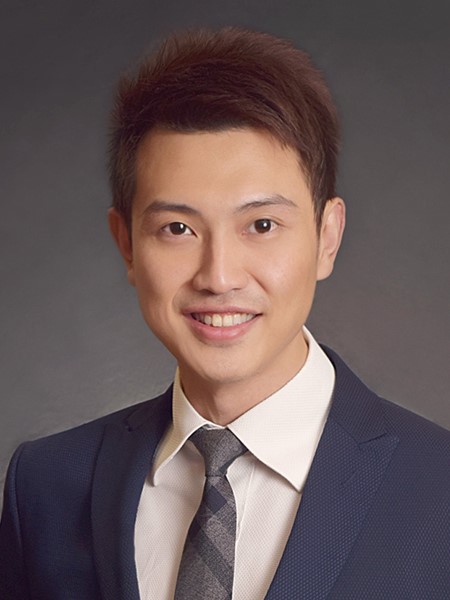<<The Singapore Eye Lesion Analyser (SELENA+) is an AI-powered image reader used to analyse eye scans and identify signs of diabetic eye diseases.>>
The SingHealth-SGInnovate partnership will advance health science innovations.
Healthcare in Singapore will get a technological boost through a partnership inked between SingHealth and SGInnovate in November last year. The three-year collaboration will leverage artificial intelligence (AI) as well as other emerging technologies to advance health science innovations and further deep technology adoption in healthcare.
“Globally, AI has penetrated many industries. With Singapore having set its sights on becoming a world-class, technology-driven Smart Nation, this collaboration will accelerate the growth of healthcare in the innovation and technological space,” said Associate Professor Daniel Ting (pictured below), Director, AI Programme, SingHealth. He is also a Consultant in the Surgical Retina Department at Singapore National Eye Centre (SNEC).

Prof Ting has been an avid advocate of AI adoption to improve healthcare systems. He has been actively involved in successful healthcare innovation projects, such as the Singapore Eye Lesion Analyser (SELENA+), an AI-powered image reader used to analyse eye scans and identify signs of diabetic eye diseases.
This system was jointly developed by a research team from SNEC’s Singapore Eye Research Institute (SERI) an Singapore’s School of Computing, and alleviates the manpower needed to tackle diabetes, which is currently the world’s fastest growing chronic disease.
Recognising the need for healthcare to adapt and leverage the benefits of technology, Prof Ting emphasised the urgency for AI adoption. “The digital revolution is upon us. If we do not keep up, as a small nation, we run the risk of being left behind, to the detriment of our future generations,” he said.
Benefits of partnership
In a nutshell, the tie-up between SingHealth and SGInnovate brings together healthcare professionals who have the clinical and research expertise with companies who have the technological proficiency and resources, and eventually with commercial partners who have the business know-how to catalyse the process of translating novel ideas from bench to bedside.
The partnership will focus on three main areas. Firstly, it aims to advance AI thought leadership in healthcare and innovation communities.
To shape mindsets and promote knowledge and awareness, quarterly AI and digital innovation journal clubs will be organised – with the first held in January this year – where SingHealth’s clinicians and innovators can meet up with SGInnovate’s public and private sector partners in the health science and innovation communities. Annually, a workshop will also be held to educate industry partners, healthcare professionals and the public on regulations, research findings and the adoption of various AI systems in healthcare.
Secondly, the partnership provides resources and opportunities for start-ups to grow and create products that will address gaps in healthcare delivery.
“Previously, collaboration opportunities were more ad hoc. We are now streamlining these processes. The partnership will allow us to create an AI Sandbox (refer below) between the institution and the companies, and establish the processes to move forward systematically,” said Prof Ting.
There is also potential for reverse pitching to occur, where the clinician identifies a problem and requests for a technological solution. In this case, SGInnovate’s diverse network of companies and innovators will be invited to give ear to clinicians from SingHealth and the other two healthcare clusters, and subsequently develop a suitable solution to address the unmet clinical needs.
“Any technological solution that is created can be further scaled to national or even international levels through SGInnovate’s network. Similarly, a technological solution created overseas may be brought to us. There is a possibility then that we may become the first in Asia to try a certain new solution and test its feasibility and suitability with the Asian population,” said Prof Ting.
The third objective is to grow the health innovation talent pool in Singapore. Prof Ting believes that nurturing the younger generation of clinicians and equipping them with the right skill sets will be necessary, in view of the rapid pace of development in this area.
SingHealth and SGInnovate will tap on venture capitalists and multinational companies for on-the-job training opportunities for those with biomedical training or Deep Tech skills to empower them tobecome globally competitive.
“Over the next three years, we are looking forward to exciting AI and digital innovations to come to fruition with this partnership. These innovations will ultimately benefit patient care — through the improvement of clinical outcomes, enhancement of the patient experience or making processes more cost-effective,” said Prof Ting.
Creating an AI Sandbox
An AI Sandbox between the institution and the technological companies may come in two forms:
Clinical Sandbox
Situation: AI algorithms are created by technological companies locally or overseas, but not tested in the local population. Solution: Through SGInnovate, these start-ups or companies are linked to SingHealth, which can provide anonymised relevant data sets from the various research work done by its clinician scientists. The AI algorithms can then be tested to see if they are applicable and generalisable to the Singapore population.
Technical Sandbox
Situation: An AI algorithm is developed and tested in the Asian population in other countries, and is found to be usable. However, it is not tested in SingHealth’s digital ecosystem. Solution: A digitally simulated environment is thus created, where testing can occur to ensure compatibility between the two systems.
Get the latest updates about Singapore Health in your mailbox! Click here to subscribe.
Tags:
;
;
;
;
News Article;
;
SingHealth;Singapore National Eye Centre;
;
Singapore Health;
;
;
;
;
Singapore Health
